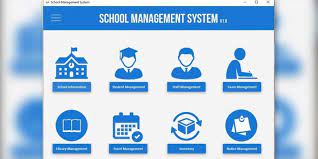Evaluate your requirements: Determine the specific data and functionality you need to export from your current school management system. This may include student records, staff details, attendance data, gradebook information, class schedules, financial records, and any custom settings or reports.
management system's data. This ensures that you have a copy of all the information in case anything goes wrong during the export process.
A comprehensive School Management Software typically includes the following features:
1. Student Information Management: This feature allows administrators to store and manage student records, including personal information, contact details, attendance records, academic performance, and disciplinary history.
2. Attendance Management: The software enables tracking and managing student attendance, generating reports, and sending notifications to parents in case of absences or tardiness.
3. Gradebook and Exam Management: It provides functionality for teachers to record and manage student grades, calculate GPAs, and generate progress reports. It may also include features for scheduling and managing exams.
4. Timetable Management: This feature allows administrators to create and manage class schedules, allocate teachers and classrooms, and handle any changes or conflicts that may arise.
5. Communication and Collaboration: The software provides a platform for effective communication between teachers, parents, and students. It may include features such as messaging, announcements, event calendars, and parent-teacher conference scheduling.
6. Fee Management: It helps in managing and tracking student fees, including invoicing, fee collection, payment reminders, and generating financial reports.
7. Library Management: This feature assists in managing the school library, including cataloging books, tracking loans, issuing reminders for overdue books, and generating library reports.
8. Transport Management: If the school provides transportation services, this feature helps manage routes, schedules, driver details, and student transportation records.
9. Staff and Teacher Management: This feature allows administrators to maintain records of staff and teachers, including personal details, employment history, attendance, and leave management.
10. Reporting and Analytics: The software provides comprehensive reporting and analytics capabilities, allowing administrators to generate various reports related to student performance, attendance, fee collection, library usage, and more. This helps in assessing the overall performance and making data-driven decisions.
These are some of the common features found in a School Management Software, but the actual features may vary depending on the specific software and the needs of the institution.





